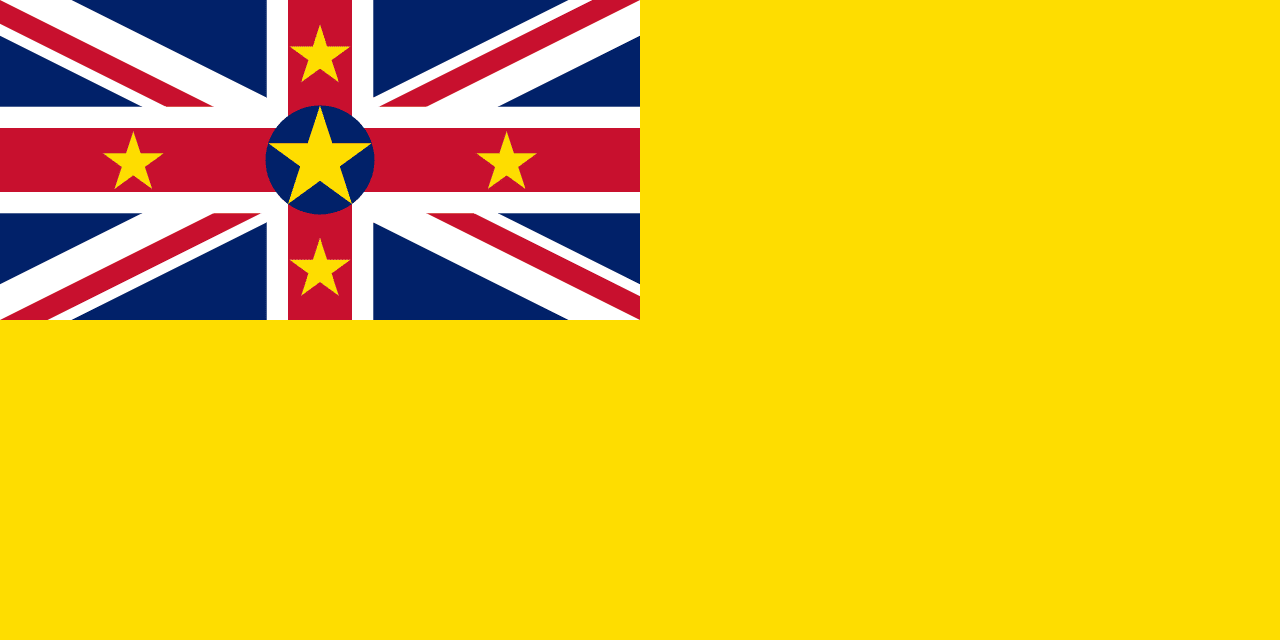La bandera de Nigeria consta de tres franjas verticales iguales de verde, blanco y verde. Este diseño simple pero llamativo representa los ricos recursos naturales del país, su diversa herencia cultural y sus aspiraciones de paz y unidad, convirtiéndola en un poderoso símbolo de la identidad y la nación nigeriana.
Información sobre Nigeria
| Día Nacional de la Bandera | 1 de octubre |
| Estado soberano | Sí |
| Nombre oficial | República Federal de Nigeria |
| Capital | Abuya |
| Población | 202,915,907 |
| Área | 923,768 km² |
| Moneda | Naira nigeriana (NGN) |
| Idioma | Inglés (oficial), Hausa, Yoruba, Igbo, Fulani |
| Continente | África |
| Región | África Occidental |
| Subregión | — |
| Fronteras | Benín, Chad, Camerún, Níger |
| Zona horaria | Hora de África Occidental (WAT) UTC+1 |
| Código de llamada | +234 |
| Dominio de nivel superior | .ng |
Historia de la bandera de Nigeria
 La bandera de Nigeria fue adoptada oficialmente el 1 de octubre de 1960, coincidiendo con la independencia de Nigeria del dominio colonial británico. El diseño fue creado por Michael Taiwo Akinkunmi, un estudiante nigeriano que estudiaba en Londres, quien ganó un concurso para diseñar la bandera de la nueva nación en 1959. El diseño original de Akinkunmi incluía un sol rojo radiante en la franja blanca, que luego se eliminó por simplicidad. La bandera ha permanecido sin cambios desde su adopción, simbolizando la continuidad y estabilidad en la identidad nacional de Nigeria.
La bandera de Nigeria fue adoptada oficialmente el 1 de octubre de 1960, coincidiendo con la independencia de Nigeria del dominio colonial británico. El diseño fue creado por Michael Taiwo Akinkunmi, un estudiante nigeriano que estudiaba en Londres, quien ganó un concurso para diseñar la bandera de la nueva nación en 1959. El diseño original de Akinkunmi incluía un sol rojo radiante en la franja blanca, que luego se eliminó por simplicidad. La bandera ha permanecido sin cambios desde su adopción, simbolizando la continuidad y estabilidad en la identidad nacional de Nigeria.
Simbolismo y diseño de la bandera de Nigeria
El diseño de la bandera de Nigeria es simple pero profundamente simbólico:
- Las franjas verdes a ambos lados representan la riqueza natural de Nigeria, particularmente sus exuberantes bosques, abundante agricultura y ricas reservas de petróleo.
- La franja blanca en el centro simboliza la paz y la unidad. Representa el deseo de armonía entre los diversos grupos étnicos y religiones de Nigeria.
- La orientación vertical de las franjas es distintiva, diferenciando la bandera de Nigeria de muchas otras banderas tricolores y enfatizando la fuerza y el impulso hacia adelante del país.
Uso y significado de la bandera de Nigeria
 La bandera de Nigeria es un símbolo ubicuo de identidad y orgullo nacional. Se exhibe prominentemente en edificios gubernamentales, escuelas y durante celebraciones nacionales como el Día de la Independencia el 1 de octubre. La bandera juega un papel crucial en fomentar un sentido de unidad entre la diversa población de Nigeria de más de 200 millones de personas, que comprende más de 250 grupos étnicos. En contextos internacionales, la bandera representa a Nigeria en eventos diplomáticos, reuniones de las Naciones Unidas y competiciones deportivas, simbolizando la soberanía del país y su importante papel en los asuntos africanos y globales.
La bandera de Nigeria es un símbolo ubicuo de identidad y orgullo nacional. Se exhibe prominentemente en edificios gubernamentales, escuelas y durante celebraciones nacionales como el Día de la Independencia el 1 de octubre. La bandera juega un papel crucial en fomentar un sentido de unidad entre la diversa población de Nigeria de más de 200 millones de personas, que comprende más de 250 grupos étnicos. En contextos internacionales, la bandera representa a Nigeria en eventos diplomáticos, reuniones de las Naciones Unidas y competiciones deportivas, simbolizando la soberanía del país y su importante papel en los asuntos africanos y globales.
Datos interesantes sobre la bandera de Nigeria
- El diseñador de la bandera de Nigeria, Michael Taiwo Akinkunmi, tenía solo 23 años cuando creó el diseño ganador en 1959.
- La bandera de Nigeria es una de las pocas banderas nacionales que utiliza solo dos colores (excluyendo el blanco), lo que la hace altamente reconocible y distintiva.
- El color verde en la bandera a menudo se asocia con el apodo de Nigeria, "El Gigante de África", en referencia a su gran población e influencia económica en el continente.
- El diseño de la bandera ha inspirado varios símbolos nacionales y esfuerzos de marca, con el esquema de color verde-blanco-verde a menudo utilizado en los uniformes deportivos y logotipos oficiales de Nigeria.
- A pesar de la compleja historia política de Nigeria y las tensiones regionales, la bandera ha permanecido como un símbolo unificador, sin cambios desde la independencia.





